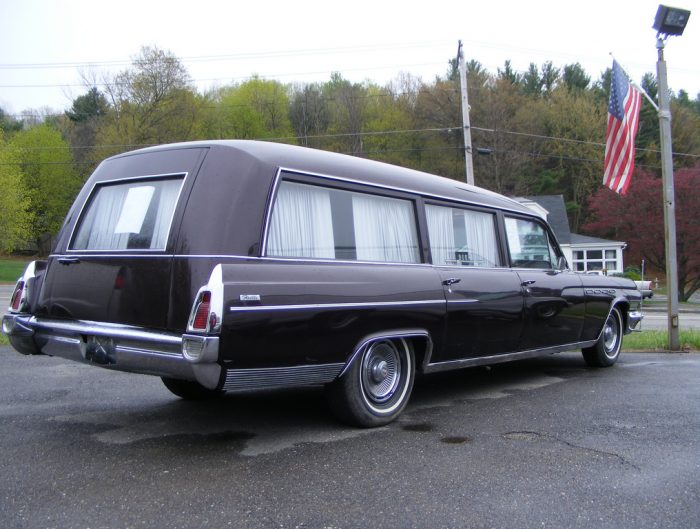If you’re looking for glamor, doing the most good for people and the planet may not be the place to find it. I’ve been thinking about this as I’ve worked with a group of scientists, advocates, and nonprofits pushing for policies in the upcoming infrastructure bill that will tackle the climate crisis–that is, actually reduce greenhouse gas emissions, rather than merely make claims about doing so. This is an important distinction, because the proliferation of “green” investing and “net zero emissions” pledges notwithstanding, the concentration of CO2 in the atmosphere continues to rise, and the climate doesn’t give a shit about press releases.
From a certain perspective, our conversations can seem maddeningly boring and quotidian, far from the flashy announcements big corporations and nations have been making–empty commitments to take action. Rather, they are about the policies that will determine whether we will prevent catastrophic warming of the planet.
Refrigerants are an excellent case in point. While carbon dioxide (“CO2”) is the most well-known greenhouse gas, it is not the most potent. That distinction falls to Hydrofluorocarbons (“HFCs”), which have “thousands of times the heat-trapping power of CO2″ and are “used as refrigerants in air conditioning and refrigeration systems, as well as in plastic foams, aerosols, and more applications.” Another powerful greenhouse, methane, has a greenhouse effect that is “25 times greater than CO2 over a 100-year period.”
To tackle climate change, we can’t ignore HFCs and methane. In fact, between them they account for 18% of global greenhouse gas emissions:

Source: IPCC (2014)
One challenge is that as we move to electrify everything, heat pump-driven systems are going to be essential: they are far more efficient than boilers and conventional water heaters, can run on clean electricity, and can be used for heating and cooling, even in extreme climates…but they also rely on the use of refrigerants.
Presently, heat pumps sold in the U.S. use “410a, a synthetic chemical refrigerant that is 4,260 times more potent” than CO2. Over the life cycle of a typical heat pump system, about 12 pounds of 410a will leak, resulting in “the greenhouse gas emissions equivalent of burning 54 barrels of oil, or driving a car for five years.” While heat pumps are still significantly better than fossil fuel-driven systems, this is an unnecessary trade-off, because there already exists an alternative refrigerant: HFC-32, which “packs only about one third the amount of warming” as 410a.
So why aren’t heat pumps in the U.S. using HFC-32? Because Honeywell objected to its inclusion in model safety codes written in 2019–codes that are broadly adopted nationwide–ostensibly due to concerns about HFC-32’s flammability, but in reality because the company is developing its own alternative. To read the full story, check out this article in Inside Climate News (a fantastic resource.) The upshot of all this is that advocates are pushing to make sure that the infrastructure bill includes a mandate that refrigerants with lower warming potential be used in heat pumps–starting with HFC-32, but also, we want to see the EPA incentivize the development of even safer and more climate-friendly gases.
Another example of a nuanced policy tweak that can have a huge impact on the climate is the FHA Title 1 loan program. Absent the provision of affordable, equitable, and scalable financing for homeowners and small to medium-sized business to electrify their homes and buildings, the rate at which we decarbonize our economy will be unacceptably slow. After all, when a homeowner purchases a solar system, she is effectively purchasing 30 + years of power, up front; a well-structured loan means that she can save money each month, even after accounting for the debt service.
Rewiring America, a group that is pushing for residential electrification, estimates that, in order to hit our climate goals, we need to be electrifying 300,000+ homes a month for the next ten years. No matter how many rebates and credits the infrastructure bill includes–one version I’ve seen is $10,000 per heat pump system, with more for low to moderate-income families–there will still be a need for access to loans to finance part of the system (solar, battery backup, insulation, ductwork, heat pumps, removal of mold, etc.).
The challenge for a nonprofit lender like Capital Good Fund is that, while we know how to make green loans to lower-income families at scale–to date, we’ve closed nearly 600 of them for $6 million–we do not take deposits, like a bank does. As a result, we have to borrow the money we lend out. In order to equitably finance electrification for lower-income households, we need to offer a rate and a term that makes the project net-zero-cost: in other words, where the savings from the project is equal to or greater than the monthly payments on the loan.
Doing so requires a term of 15 – 20 years and rates of 3% – 5% APR. However, Capital Good Fund’s current “cost-of-capital”–the average rate we pay to our creditors–is 3.25%, and the average term of our debt is less than five years. So in order for us to offer hundreds of millions of dollars of electrification loans, we need to find a way to raise cheaper and more patient capital.
The FHA Title 1 loan program may hold the key. Under Title 1, an FHA-approved lender can make loans up to $25,000 for home improvement, which can include electrification. There is no minimum FICO or income requirement; borrowers must simply pass the lender’s underwriting criteria and have a debt-to-income ratio of less than 45%. The lender gets a second-position lien on the house and the FHA insures 90% of the loan: if the borrower defaults, the FHA will cover 90% of the lost principal.
Between the collateral and the FHA insurance, these loans are attractive and low-risk to investors; there is actually a secondary-market for them, meaning that Capital Good Fund could sell the loans to banks, credit unions, foundations, and other investors (we would continue to service the loans and maintain the relationship with the borrower.) The low-risk nature of the loans, combined with the fact that they are mortgages, means that we can offer the borrowers longer terms and lower rates. By selling loans, we can have a nearly inexhaustible supply of capital to fund the loans. Here’s how it could work: we originate $1 million in Title 1 loans, and then sell them for $970,000. We service the loans and share the interest income with the buyer, and in the meantime we take the $970,000 and re-deploy it.
The problem is that FHA Title 1 loans are a wildly underutilized tool for green lending: only about 1,500 of these were originated in 2020. One of the reasons, aside from the fact that they aren’t as profitable as mainstream banks would like (that’s what Capital Good Fund is for–to make loans others won’t), is that the loans are capped at just $25,000. That’s barely enough for a solar system, and certainly not enough for most electrification projects. What’s more, the transaction cost of originating a $25,000 second-mortgage is a large percentage of the principal balance, making the economics difficult and sometimes leading to high down payments. So, in addition to the aforementioned refrigerant policy, I am also advocating for an increase in the Title 1 loan program maximum from $25,000 to $50,000. I believe this would enable a number of lenders, including Capital Good Fund, to scale up equitable green loans for lower-income families.
These are just two of countless examples where what can make legislation work in practice is granular, nuanced, and, for lack of a better word, unsexy. The atmosphere doesn’t care about pomp and ceremony; it merely responds to concentrations of greenhouse gases. The key takeaway, then, is that if you want to do good, don’t strive for what’s sexy–strive for what works!



